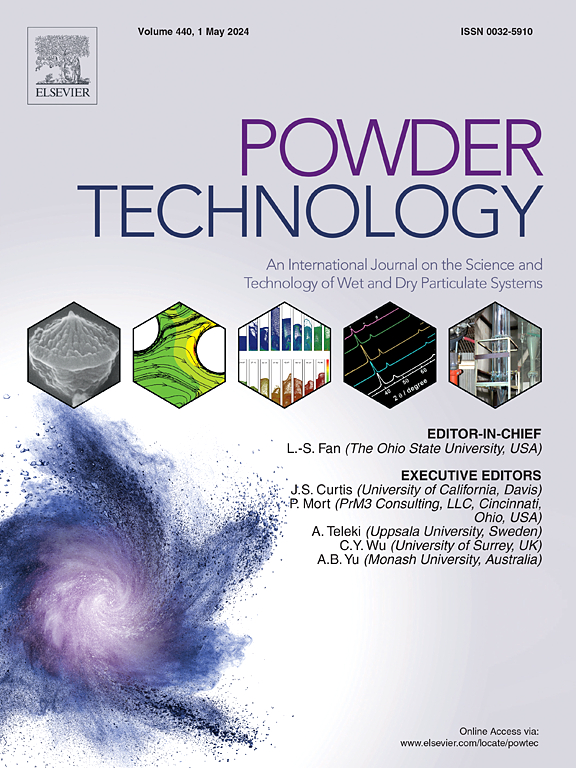Efficient and synergistic preparation of HNS-based energetic composite microspheres by the continuous drop-ball method and optimization of their multi-dimensional performance
IF 4.5
2区 工程技术
Q2 ENGINEERING, CHEMICAL
引用次数: 0
Abstract
This study presents an innovative continuous ball-dropping device combined with high-speed stirring and curing to successfully produce HNS-based energetic composite microspheres with uniform components and complete coatings. The effects of process parameters such as binder content, suspension concentration, continuous phase concentration, and stirring rate on the morphology and particle size distribution of the microspheres were systematically examined. The study further investigates the impact of the continuous ball-dropping method on fluidity, chemical structure, bulk density, thermal properties, mechanical sensitivity, and combustion properties of the microspheres. Results show that compared to Nano-HNS, the HNS-based microspheres prepared by the ball-dropping method exhibit improved fluidity (angle of repose: 37.97° vs 22.09°), higher bulk density (0.453 g·cm−3 vs 0.552 g·cm−3), and increased activation energy. Mechanical sensitivity tests show a significant safety improvement, with critical impact energy increasing from 2.5 J to 40 J and friction sensitivity rising from 108 N to 180 N. The combustion performance of microspheres prepared by this method exhibits a larger flame area and shorter combustion time, thereby improving energy release efficiency. Compression performance improves as well, with microspheres exhibiting increased compression resistance, rising from 14.04 MPa to 37.02 MPa compared to traditional methods. In conclusion, the continuous drop ball method, combined with high-speed stirring and curing, efficiently produces fully coated energetic composite microspheres, offering a promising route for the large-scale industrial production of energetic materials.

求助全文
约1分钟内获得全文
求助全文
来源期刊

Powder Technology
工程技术-工程:化工
CiteScore
9.90
自引率
15.40%
发文量
1047
审稿时长
46 days
期刊介绍:
Powder Technology is an International Journal on the Science and Technology of Wet and Dry Particulate Systems. Powder Technology publishes papers on all aspects of the formation of particles and their characterisation and on the study of systems containing particulate solids. No limitation is imposed on the size of the particles, which may range from nanometre scale, as in pigments or aerosols, to that of mined or quarried materials. The following list of topics is not intended to be comprehensive, but rather to indicate typical subjects which fall within the scope of the journal's interests:
Formation and synthesis of particles by precipitation and other methods.
Modification of particles by agglomeration, coating, comminution and attrition.
Characterisation of the size, shape, surface area, pore structure and strength of particles and agglomerates (including the origins and effects of inter particle forces).
Packing, failure, flow and permeability of assemblies of particles.
Particle-particle interactions and suspension rheology.
Handling and processing operations such as slurry flow, fluidization, pneumatic conveying.
Interactions between particles and their environment, including delivery of particulate products to the body.
Applications of particle technology in production of pharmaceuticals, chemicals, foods, pigments, structural, and functional materials and in environmental and energy related matters.
For materials-oriented contributions we are looking for articles revealing the effect of particle/powder characteristics (size, morphology and composition, in that order) on material performance or functionality and, ideally, comparison to any industrial standard.
 求助内容:
求助内容: 应助结果提醒方式:
应助结果提醒方式:


